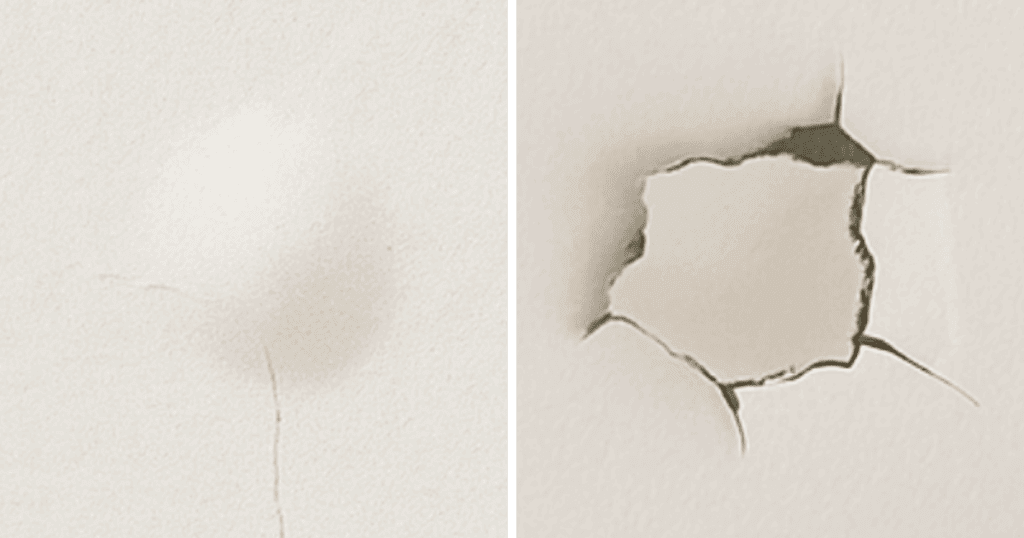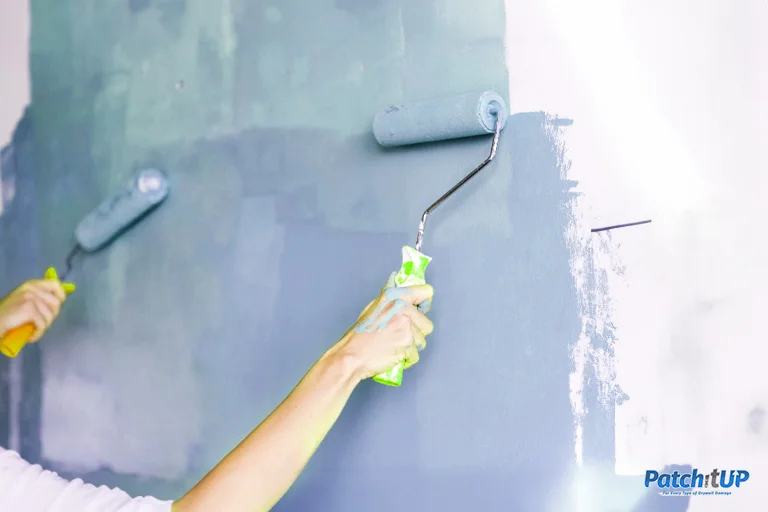Drywall Installation Ogden Utah paired with professional painting can brighten any space instantly.
Discover the Finest Practices for Effective Drywall Fixing and Installation
The art of drywall repair and installation needs a blend of skill and accuracy. Understanding the important tools is vital for attaining a smooth finish. Recognizing the detailed process can make a considerable distinction in the result. Appropriate methods for mudding and taping are additionally crucial. What continues to be is the knowledge of upkeep that guarantees long life. These aspects together develop a refined outcome worth checking out better.

Necessary Tools for Drywall Repair Service and Setup
When carrying out drywall fixing and installation, having the right devices can greatly boost the performance and top quality of the job. An energy blade is essential for reducing drywall sheets precisely, while a drywall saw can help in making much more elaborate cuts. Taping knives, readily available in numerous sizes, are important for using joint substance efficiently and evenly. A drywall sander, ideally with a dust collection function, helps attain a sleek surface, decreasing the need for considerable cleanup.
Furthermore, a determining tape warranties accurate dimensions, and a level makes sure that installments are straight and plumb. Security equipment, consisting of dust masks and safety glasses, should not be neglected to safeguard versus particles and dust. Lastly, a stud finder aids in situating framing participants, assuring protected installment. By gearing up oneself with these essential devices, the repair service and installment procedure becomes more workable and leads to a professional-quality result.

Step-by-Step Overview to Patching Holes
Covering openings in drywall needs a systematic approach to guarantee a seamless repair service. Initially, the location around the hole should be cleaned up and any kind of loose particles eliminated. For little holes, a putty knife can be used to use a lightweight spackle, pushing it into the hole and smoothing the surface. After it dries out, fining sand is crucial to develop a level coating. For bigger openings, a patch of drywall might be needed. This involves reducing a piece of drywall a little larger than the opening, protecting it to the wall with screws, and using joint compound to cover the joints. When the compound dries, it ought to be fined sand smooth. Finally, keying the patched area before painting will certainly ensure an even coating. Adhering to these steps will certainly lead to a professional-looking repair that blends seamlessly with the bordering wall.
Strategies for Seamless Drywall Installation
Accomplishing seamless drywall setup demands mindful preparation and execution. It is important to determine and reduce drywall sheets accurately to reduce spaces. Utilizing an utility blade, installers need to score the board before breaking it along the cut line, guaranteeing tidy sides. Properly aligning the sheets is crucial; beginning from the leading and working down assists keep uniformity.
Attaching drywall to the studs requires constant spacing, generally every 16 inches, making use of screws as opposed to nails for much better hold. This method minimizes the danger of pops over time. In addition, staggering the joints in between sheets enhances architectural integrity and reduces the exposure of joints.
Utilizing the ideal density of drywall for certain locations-- such as moisture-resistant kinds in shower rooms-- more adds to a remarkable finish. Adhering to these strategies will certainly lead to a professional-looking and smooth installation, setting the stage for the succeeding finishing processes.
Finishing Touches: Taping and Mudding
Completing touches, such as mudding and taping, play an essential role in achieving a polished drywall surface area. Taping includes using a slim strip of drywall tape over the joints and joints, making certain a smooth appearance. This procedure assists protect against fractures and creates a solid bond in between drywall sheets. It is important to pick the appropriate type of tape, with paper and fiberglass harmonize being the most typical options.
Mudding, or applying joint substance, follows taping. This compound fills out voids and smooths out the surface area for an uniform coating. It is typically applied in numerous layers, with each layer needing to completely dry prior to sanding. Correct method includes feathering the sides to mix the substance into the bordering drywall, lessening visibility.
When completed appropriately, mudding and taping boost both the visual and structural stability of the drywall installation, resulting in a professional-quality finish.
Tips for Keeping Your Drywall After Installation

Furthermore, preserving a constant indoor moisture level can stop bending or mold development. Utilizing a dehumidifier in wet areas, like basements, is advisable. It's likewise helpful to occasionally paint areas that reveal wear, as this protects the underlying material. Lastly, when relocating furniture or setting up components, caution should be worked out to stay clear of damaging the drywall. By adhering to these upkeep ideas, home owners can prolong the life of their drywall, safeguarding it stays an eye-catching attribute of their interiors.
Regularly Asked Inquiries
What Safety And Security Equipment Is Needed for Drywall Fixing and Installment?
For drywall repair service and installment, important safety and security gear includes safety goggles to secure eyes, dirt masks to stop inhalation of fragments, handwear covers for hand security, and knee pads for comfort during long term kneeling. drywall contractor.
Just how Do I Identify the Drywall Density Needed for My Job?
To figure out the drywall density required for a project, one need to think about the wall's architectural demands, local structure codes, and the meant use the area, typically choosing 5/8-inch or 1/2-inch drywall.
Can I Repair Drywall Without Removing Furnishings From the Space?
Yes, drywall can be fixed without eliminating furnishings from the room. Mindful preparation and protective steps can decrease mess, allowing for effective repair work while keeping surrounding things secure from dirt and damage during the process.
What Sorts of Drywall Are Best for Different Settings?
Moisture-resistant drywall is excellent for cooking areas and restrooms, while soundproof drywall suits shared wall surfaces in apartments. Fire-rated drywall is best for garages, and common drywall works well in general living locations, making sure longevity and suitability for numerous atmospheres.
How much time Does It Take for Drywall Mud to Dry Totally?
Drywall mud typically takes 24 to 2 days to completely dry entirely, depending on factors like moisture and temperature level (drywall contractor). Thicker applications might require longer drying times, while thinner layers can dry out a lot more swiftly. Proper ventilation help drying
The art of drywall repair and setup requires a mix of ability and accuracy. When embarking on drywall repair service and setup, having the right devices can greatly boost the efficiency and quality of the job. An energy find here blade is crucial for cutting drywall sheets exactly, while a drywall saw can aid in making extra complex basics cuts. Achieving smooth drywall installation demands careful preparation and execution. Moisture-resistant drywall is perfect for bathrooms and kitchen areas, while soundproof drywall suits shared walls in homes.